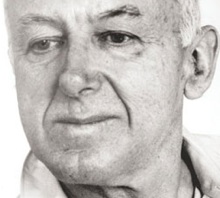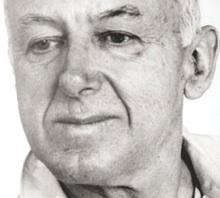
Performers on the two very full programs of music written between 1912 and 1958 include the Colorado String Quartet, the groundbreaking Abel-Steinberg-Winant Trio, pianist Cahill, organist Sandra Soderlund, and mezzo-soprano Wendy Hillhouse. Complementing the performances is a not-to-be-missed Nov. 13 preconcert discussion during which various luminaries will enlighten us about Cowell’s contributions.
Participants include composer John Duffy, founder of Meet the Composer and a student of both Cowell and Aaron Copland; Joel Sachs, author of a mammoth forthcoming Cowell biography and conductor both of the New Juilliard Ensemble and of Continuum; record producer George Avakian (Dave Brubeck, Miles Davis, Louis Armstrong); violinist Anahid Ajemian; and Cahill and Amirkhanian themselves.
According to Sachs, whose Cowell manuscript currently runs to 900 pages, Cowell forever changed piano composition and technique. A number of works on the programs, including Tides of Manaunaun and Tiger, both played by Cahill, resound with his trademark tone clusters: extremely dense chords of large size that are played with the flat of the hand or the forearm. Aeolian Harp & Sinister Resonance, The Banshee, and The Fairy Answer will feature Cahill standing or leaning over from the keyboard to play directly on the strings. Yet another aspect of Cowell’s work, an extremely dissonant and unusual free language that’s played on the piano in normal ways, comes through in the early Anger Dance.
“All through his life,” says Sachs, “Cowell had a very beautiful sense of melody. He loved to compose songs for specific people such as baritone Theodore Uppman, who was the son of one of his early mentors at Stanford.” Hillhouse will perform a different selection of songs on each concert.
Although Cowell played piano on tour, he wanted to be thought of as a composer first. Hence, starting in the 1920s, he wrote more and more music for instruments other than solo piano. The concerts will include a variety of chamber works, such as “Adagio” from Ensemble for cello and percussion, which employs Native American thunder sticks that the performer twirls on a rope over his or her head. “At the first performance,” says Sachs, “one or both broke loose and went flying, almost hitting a music critic.” (Maybe I should skip this concert ...)
As his writing evolved, Cowell started exploring music of other cultures. In 1924, he put on the first concert of non-Western music performed in the U.S. Cowell’s Set of Five (1952), performed by the same Abel-Steinberg-Winant Trio that made an unforgettable recording of the work, reflects Cowell’s cross-cultural enrichment.
“Cowell’s writing was highly colorful and uniquely imaginative,” says pianist Julie Steinberg. “His important use of percussion in chamber music included some very nonconventional instruments, such as the rice bowl. He forever changed how percussion would be used in the future.”
Violinist David Abel stresses that Cowell’s music is immediately recognizable. “The Sonata for Violin and Piano (1945) that we’ll perform is very quirky and eccentric, and very difficult to play, because its meaning isn’t obvious,” he says. “It also sounds antique and extremely accessible, but it’s definitely Cowell’s voice. You can always tell that you’re dealing with a unique voice because of the unusual instrumental demands you have not seen before.”
Given that Steinberg’s teacher, Carol Robinson, played the piano at the first New York performance of the 20-minute sonata in 1948, the performance will provide as direct a link with the composer as is possible nowadays. It’s yet one more reason to attend these two, one-of-a-kind concerts presented by the singular Other Minds.

